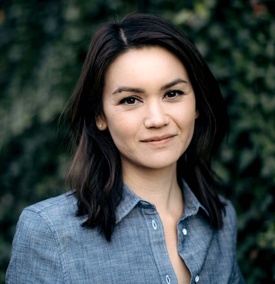Author Akemi Johnson is no stranger to the American military presence in Okinawa and its deep impact on Okinawan culture. In her new book, Night in the American Village: Women in the Shadow of the U.S. Military Bases in Okinawa, the author travels through the prefecture in narrative form, conversing with locals and uncovering the nuances and tragedies that abound around the bases that cover over 14% of Okinawa’s main island. Her book is a rare view into the everyday lives of Okinawans near the bases, and the story unfolds as Johnson herself ventures around Okinawa and tells the personal stories of women and men that she meets along the way.
Johnson is a fiction and nonfiction writer who spent a long time coming to love her own roots before beginning to write about Japan. In a recent interview with Discover Nikkei, she described how she “wasn’t crazy about being Japanese American when I was younger, growing up in Marin County, California. It’s a lovely place, but not very diverse. I hated my Japanese first name, which no one could pronounce and seemed to mark me as different. I didn’t have any interest in learning about the Japanese side of my heritage.”
That began to change for her in college, though, where she felt encouraged for the first time to explore her background and even studied abroad for a year in Kyoto, Japan. She went to Okinawa in the course of this journey of self-exploration. While her own great-grandparents hailed from Hiroshima, she found herself haunted by stories she heard about the Battle of Okinawa in one of her college classes on the Pacific War. Tales about the Japanese military actions in Okinawa, combined with present-day issues and culture, stuck in her mind.
The U.S. began building bases in Okinawa following WWII during its seven-year occupation of Japan (1945-52). After drafting a new constitution and forcing the mainland Japanese government into a new demilitarized era, it withdrew its total control over the four main islands but retained control over Okinawa until 1972. It was during this period from 1952-72, Johnson explains in her book, that “bases closed on the mainland and multiplied in Okinawa. During the Cold War, American soldiers continued to seize Okinawans’ land ‘by bulldozer and bayonet,’ displacing thousands of people to construct sprawling military facilities.” Today, over 46,000 acres of the main Okinawan island—a staggering 14%+ of all land on the island—are covered by U.S. military bases.
That large land area means that plenty of American military members and contractors constantly fill and exert influence on Okinawan culture; and it is not all negative. The more obvious points of influence range from delicious local fusion foods like taco rice (taco toppings served on a bed of white rice), to business opportunities for some local residents, to the better-known tragedies that are well-covered in much of the Okinawan media: American military degrading the environment with base construction, and occasionally committing heinous crimes against locals.
Johnson’s goal with this book, she says, is to help her readers see that whole range of influence, and empathize with the people who live at ground zero of this type of strange cultural collision. “In situations of conflict,” she noted, “it’s easy to see others in black-and-white, stereotypical ways—like the ‘faultless activist’ and the ‘rabid protester’ standing outside the gates of base construction zones. Or ‘the demonic American solider’ who rapes and murders young girls, and ‘his savior counterpart.’ The story is always more complicated than these caricatures, and it’s important to take the time to understand the other’s point of view.”1
With empathy, though, comes knowledge, and with knowledge comes the obligation to ask ourselves the hard questions about the American military empire that still exists today. Johnson argues that despite all of the valuable, tangled symbiotic relationships that exist around these bases, Okinawan residents have made it clear in the past few decades—through countless protests and local elections—that a majority of them yearn for reduction in U.S. military presence on their islands. So American readers must ask ourselves:
“Both the United States and Japan have had a heavy hand in shaping Okinawa since WWII—ignoring the will of Okinawans. Is it not time for Okinawans to control their own fate?”
What do you think?
Note:
1. Akemi Johnson, Night in the American Village: Women in the Shadow of the U.S. Military Bases in Okinawa, p. 14.
* * * * *
Join Akemi Johnson in conversation with historian Lily Welty Tamai at the JANM Tateuchi Democracy Forum from 2-4 p.m. on Saturday, January 25.
© 2020 Kimiko Medlock







